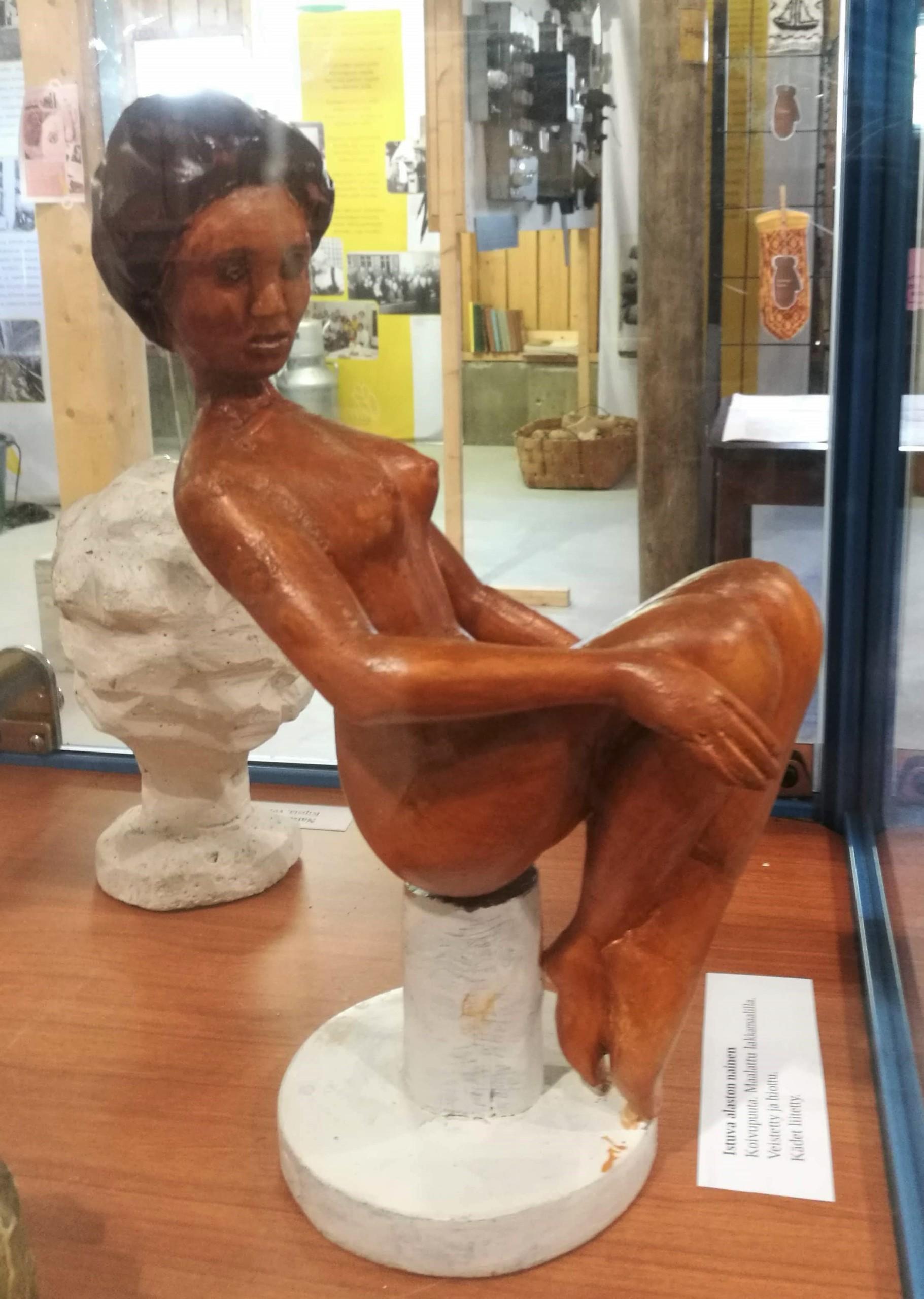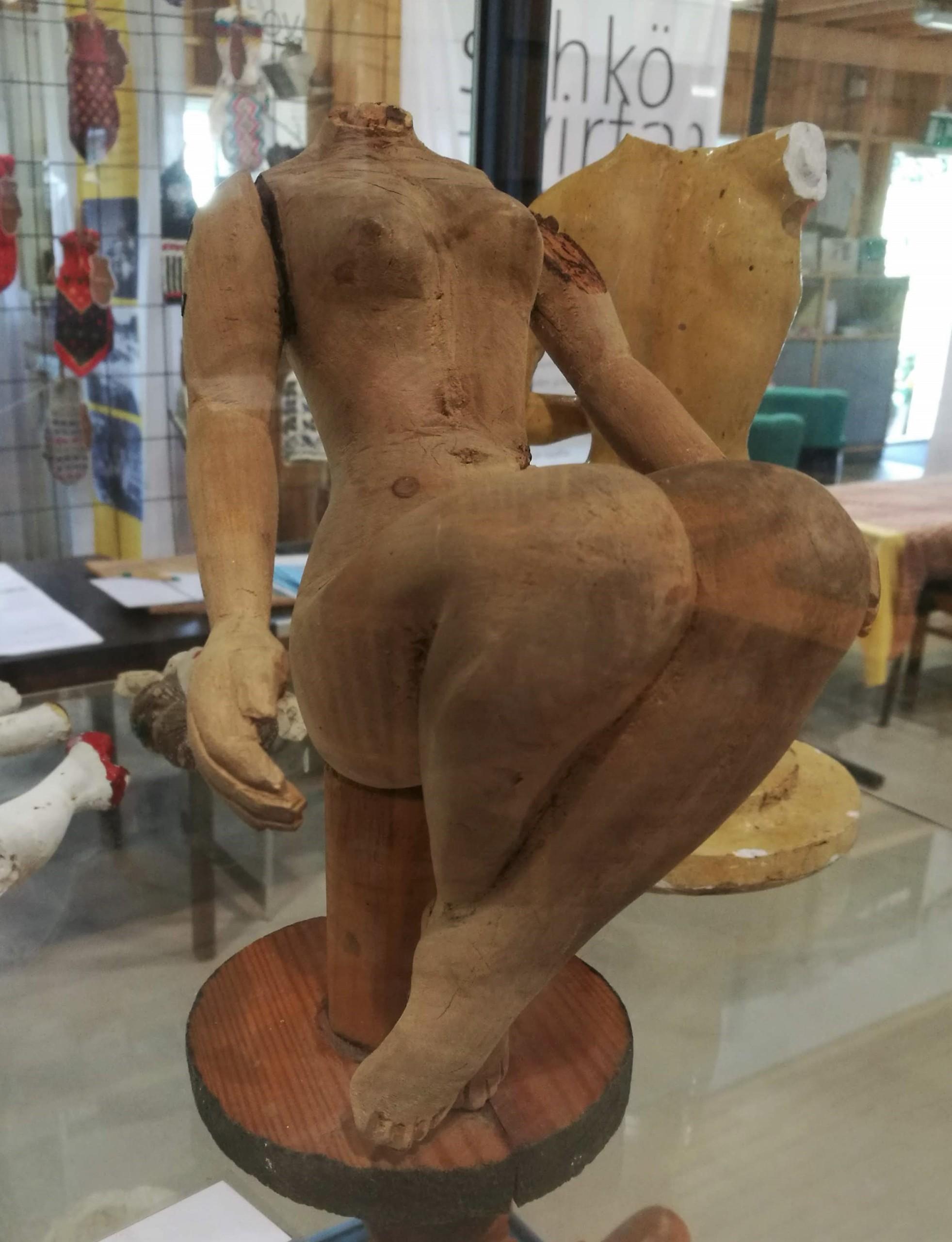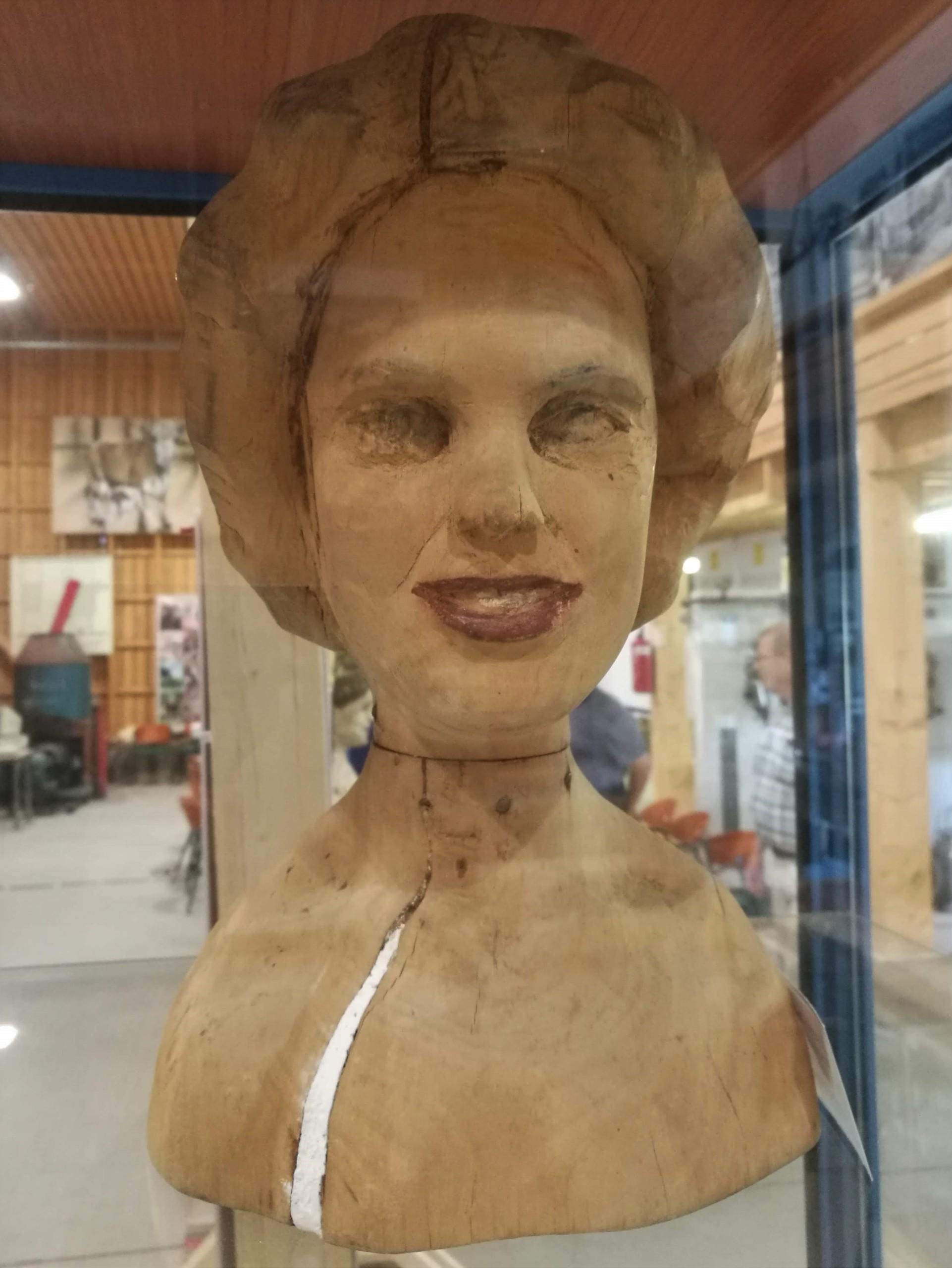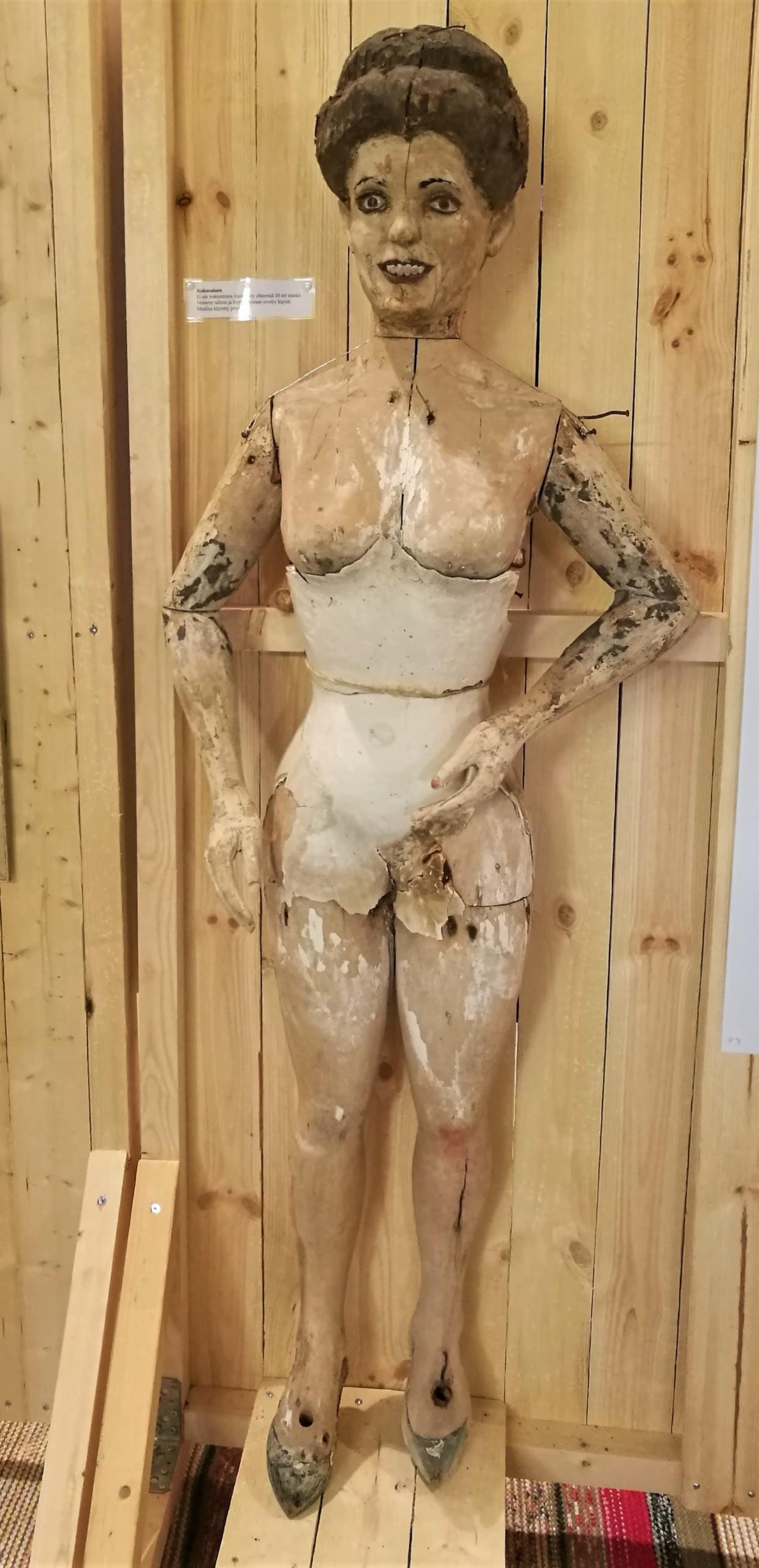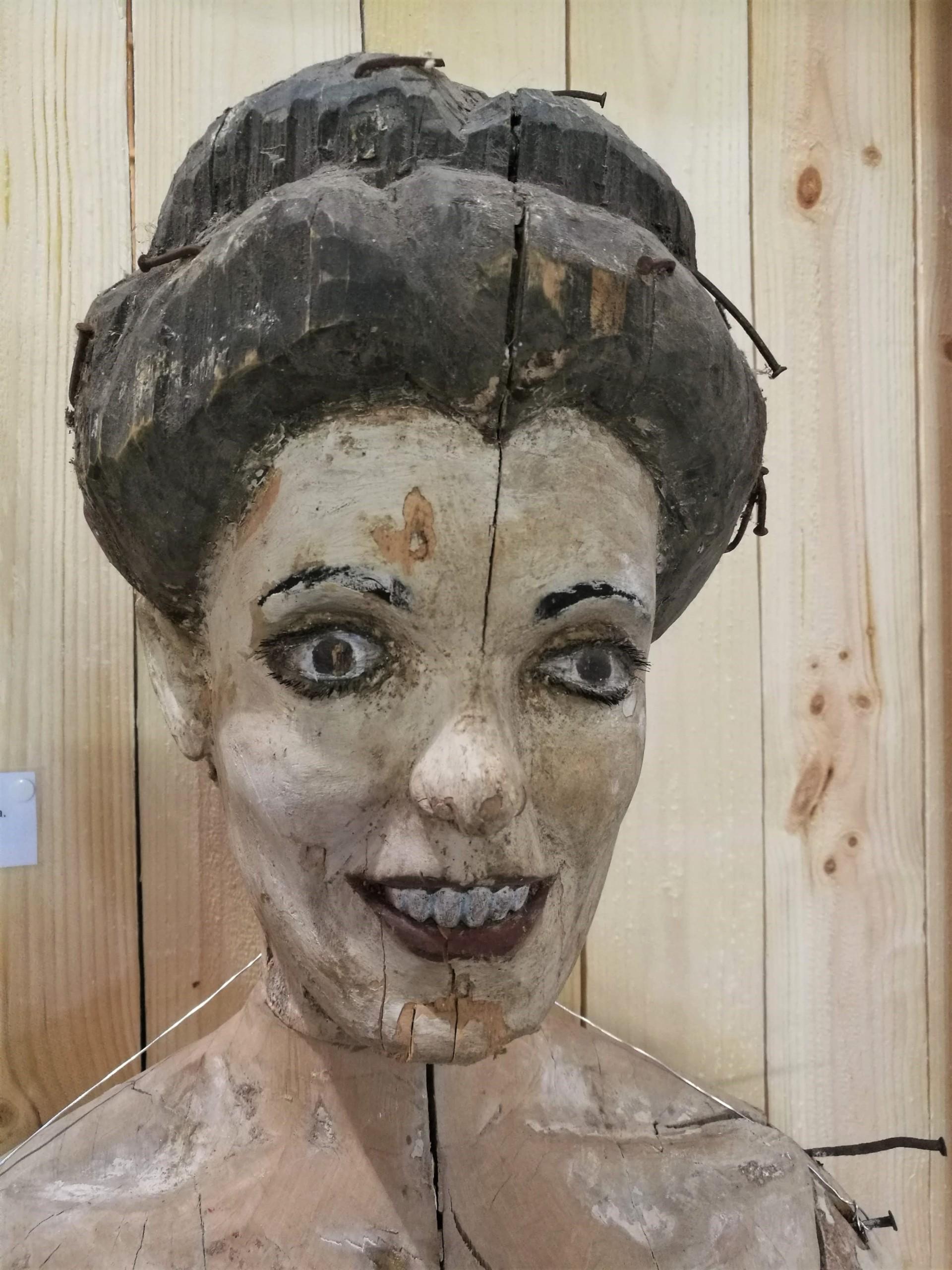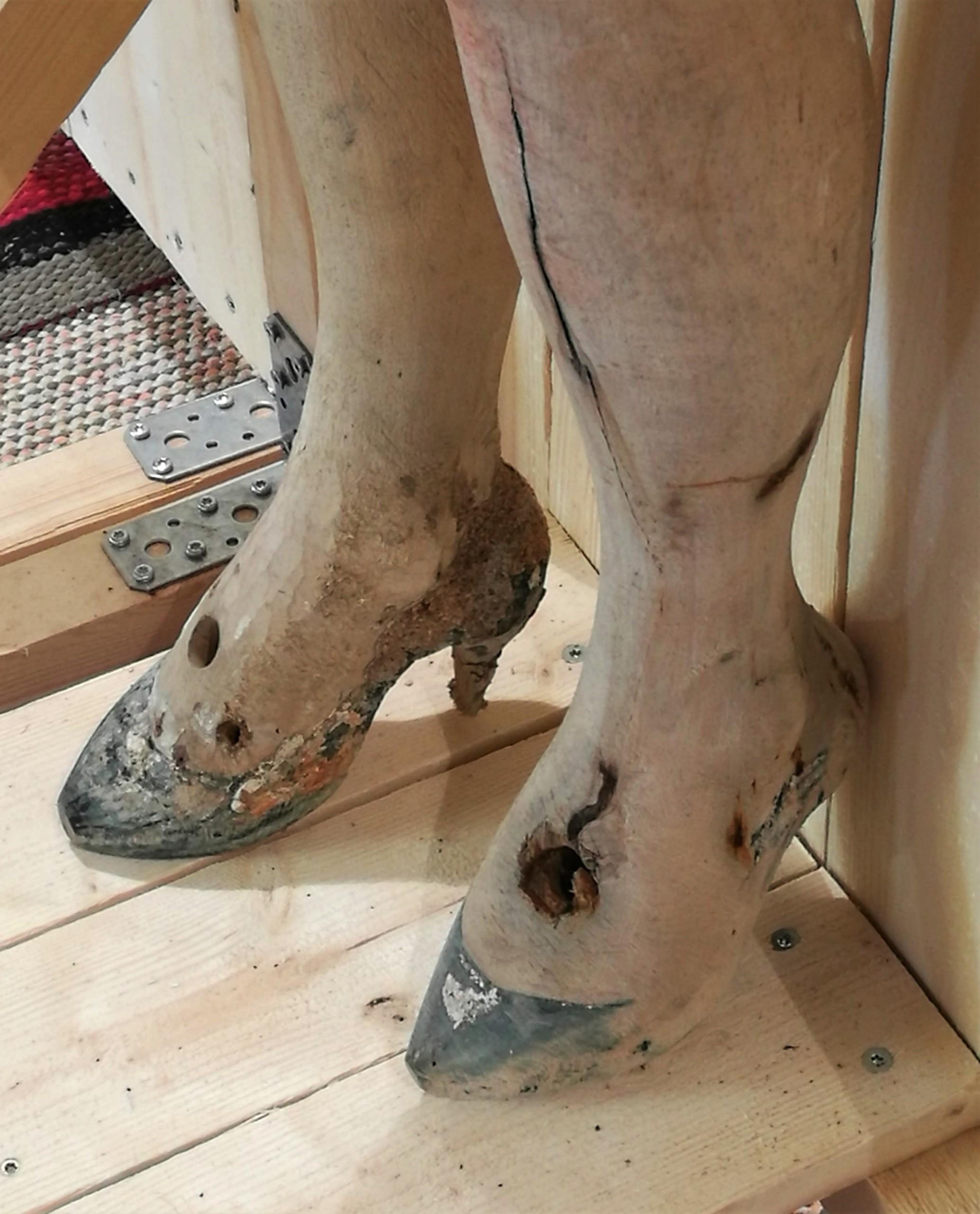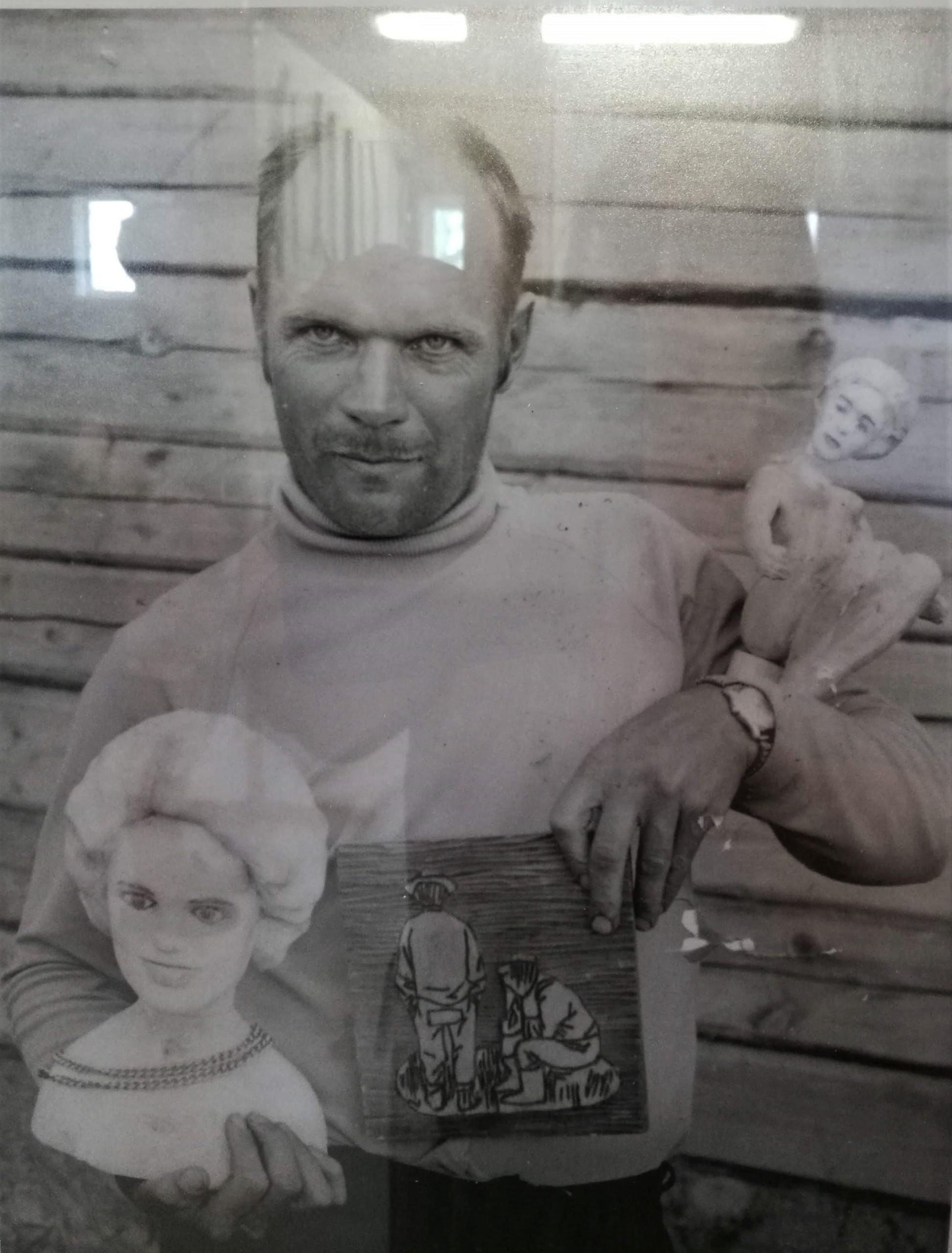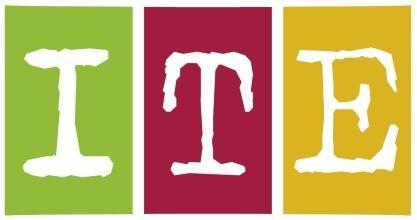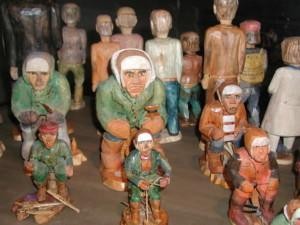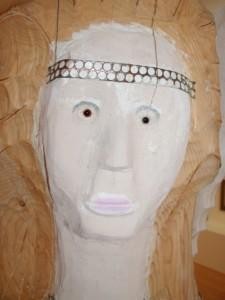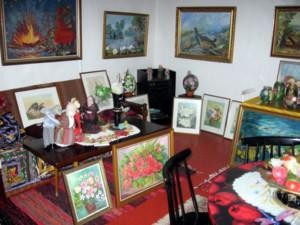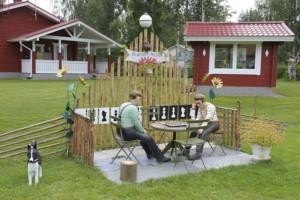
Kauko Niskanen
Liperi 1936–1979
Kauko Niskanen was born on the last day of 1936, the first child of a deeply religious farming family in Huistinvaara[A1] , Liperi. His parents were revivalists: his father was a follower of the Awakening movement, while his mother was a Laestadian. It is said that Niskanen’s artistic nature was apparent from a young age. His schoolmates remember him as a hard worker and a very strong boy, if a little quieter than the others, and his sister remembers him as a nice person who was always ready to have a laugh.
Niskanen is thought to have started carving statues of female figures in his early twenties. He used a hammer, chisel and knife to shape his sculptures and finished them with sandpaper. Niskanen also made statues out of clay. His siblings would bring him clay while he was creating female statues on the shores of Lake Heposelkä, and he was very pleased to have their help. In addition to female figures, he carved animal motifs, some of which have survived to this day. Niskanen also made musical instruments and paintings. Niskanen was very musical and played several instruments. He liked Elvis in particular and sometimes wondered if Elvis could spare a woman for him, too.
Kauko Niskanen’s father, Armas, supported his son’s artistic pursuits and was even willing to send him to art school, it is said. Armas even bought plaster of Paris for his son’s sculptures, and Niskanen did cover at least some of his wooden sculptures with plaster. We can only speculate whether he did this because he wanted to use the plaster provided by his father, because he wanted the statues to have a white surface or because, perhaps, he felt that the plaster added value to his wooden statues. Niskanen’s artistic nature was met with conflicting reactions in the religious environment. Some appreciated it, while others considered it a sin and mocked him for it. Niskanen’s brother thinks that Kauko’s depression was triggered by visitors from the Awakening movement who told him that he would end up in hell. Kauko, who was very sensitive, became uncommunicative and, eventually, went completely silent. He was treated several times at Paihola Hospital in Kontiolahti. Kauko’s brother thinks that the treatment that was available at the time was not much use to Kauko. Kauko Niskanen always returned home from Paihola following the railway track on foot. In 1979, however, his return journey ended tragically when he was accidentally hit by a train.
The Tähkä Museum in Liperi held an exhibition on Niskanen in 2022. It featured some of Niskanen’s surviving works, photographs and stories about him.
The author Heikki Turunen has written about Kauko Niskanen on quite a few occasions as the artist made a profound impression on the young writer in the 1960s. In a text accompanying the exhibition, Turunen explained how he came up with the idea for the character of Otto Ryynänen in his novel Simpauttaja when, as a young journalist, he interviewed Kauko Niskanen’s grandfather for his 70th birthday in 1968. It was then that Turunen met Kauko, whom his grandfather called a silly sculptor of naked women. Yet the grandfather was also described as having been important and close to Kauko, “a person who would steer Kauko’s dark thoughts to other directions” according to Niskanen’s brother, who also said that Ahti Jokinen, who played Otto in the film, was just like Kauko.
Heikki Turunen feels that he and Kauko Niskanen are bound by fate: they are both unfortunate artists and lonely martyr figures left behind by the rural flight. Turunen thinks that he may never have written Simpauttaja if it wasn’t for Kauko Niskanen, or at least that the novel would have missed the certain something that has made it one of the best-loved debut novels published in Finland. Kauko Niskanen never knew that Otto was based on him.
Heikki Turunen said in an interview in the newspaper Iltasanomat that he got the idea for the sequel to Simpauttaja when he learnt about Niskanen’s later fate in 2012. This book, Karjalan Kuningas, was published in 2014. Turunen also wrote an article for the Karjalan Maa newspaper about how Kauko Niskanen of Huistinvaara gave up art. Turunen describes Niskanen with words that have since been used to describe many ITE artists: Niskanen had a burning desire to draw and carve and did not need any artistic role models or external stimuli. Niskanen’s art and creativity were “painfully personal and sprung from his distinctive character”.
Turunen said in the article that Niskanen no longer made art. It appears that Niskanen’s enthusiasm for art-making faded away during the courses of treatment he underwent at Paihola – in his most intense creative phase he even had to leave the field in the middle of hay-making to escape to the lakeshore to make women out of clay. Niskanen’s brother thinks that everything would have been fine if Kauko had been left in peace to make his art.
Text and images: Minna Tuuva
Sources (all in Finnish):
Liperin maaseutumuseo Tähkä (Liperi Village Museum Tähkä): Kauko Niskanen – Ryynäsen Oton puiset naiset (‘Kauko Niskanen – Otto Ryynänen’s wooden ladies’) 21 June – 6 August 2022, exhibition texts
Heikki Turunen in HS: The tragic fate of the man who was the model for a character in the novel Simpauttaja, Iltasanomat 23 October 2014. https://www.is.fi/viihde/art-2000000825324.html
Seura reveals: Otto, who carved wooden sculptures in Heikki Turunen’s novel Simpauttaja, was based on this man. Seura 28 May 2015. https://seura.fi/ilmiot/historia/seura-paljastaa-han-oli-puuveistoksia-veistelleen-oton-esikuva-heikki-turusen-simpauttaja-romaanissa/
